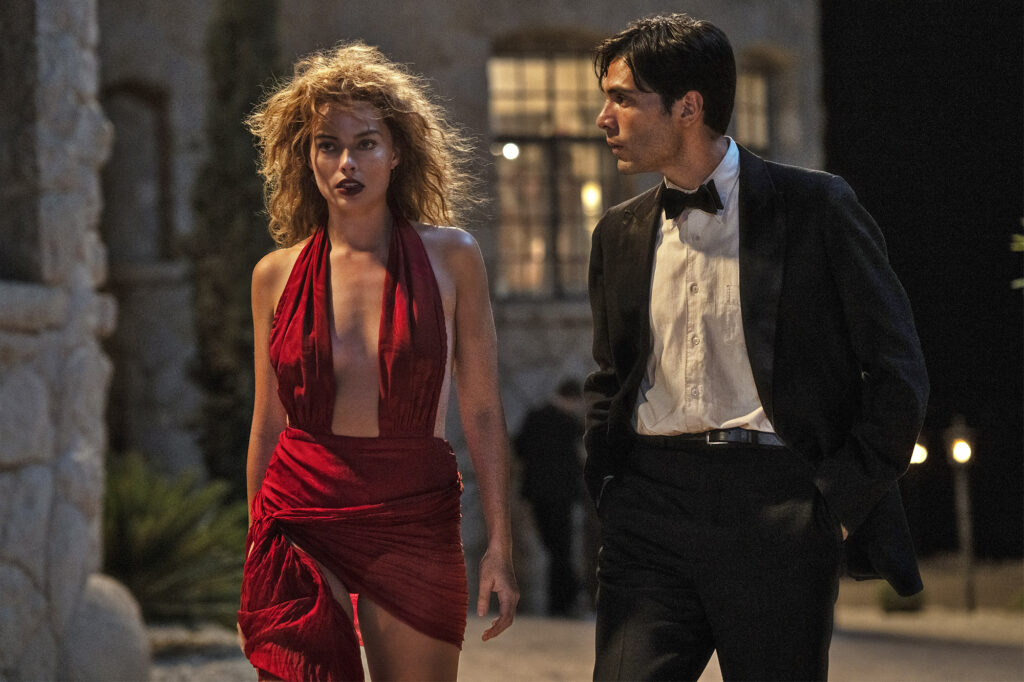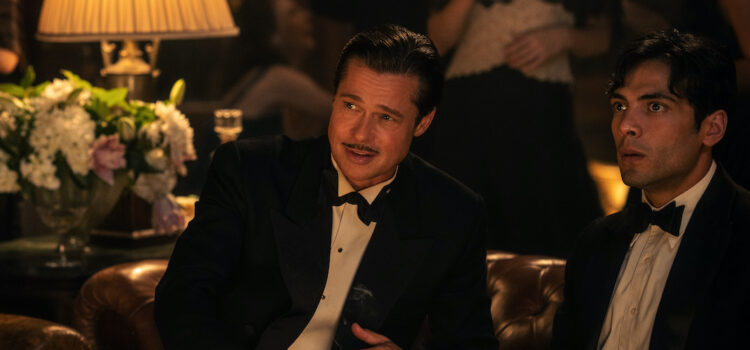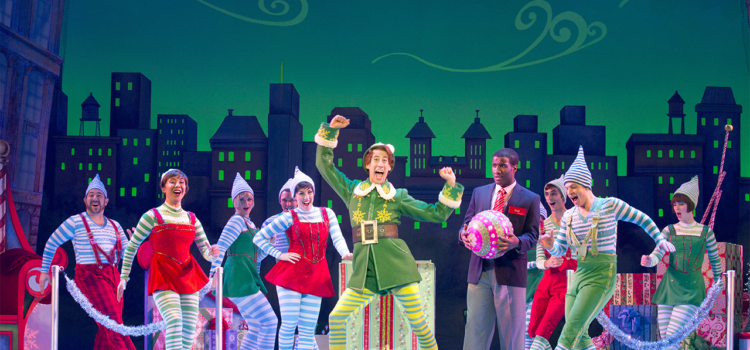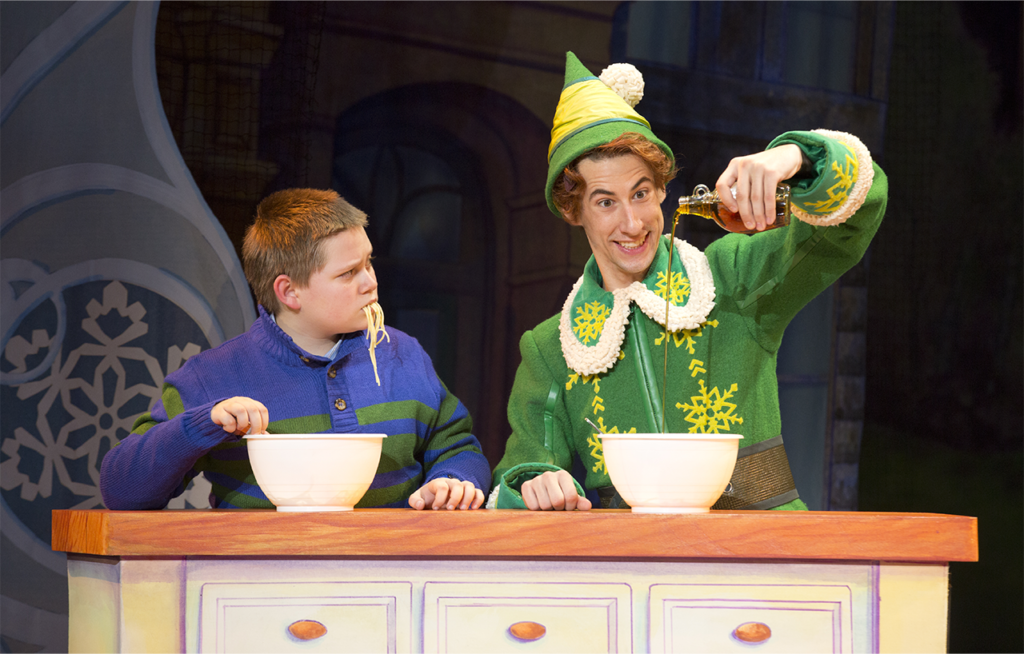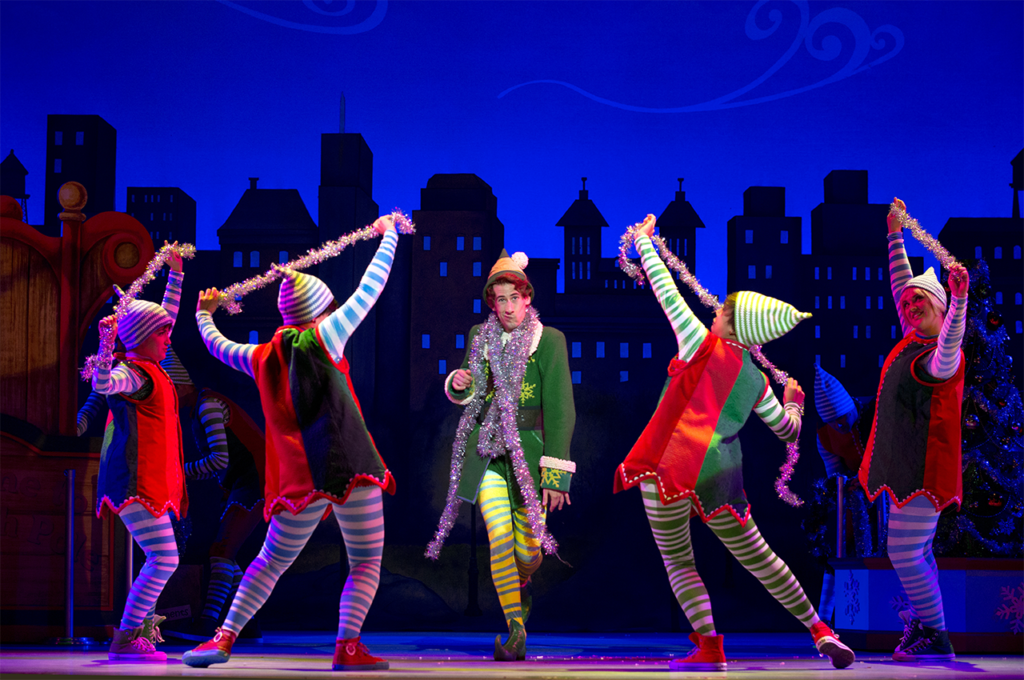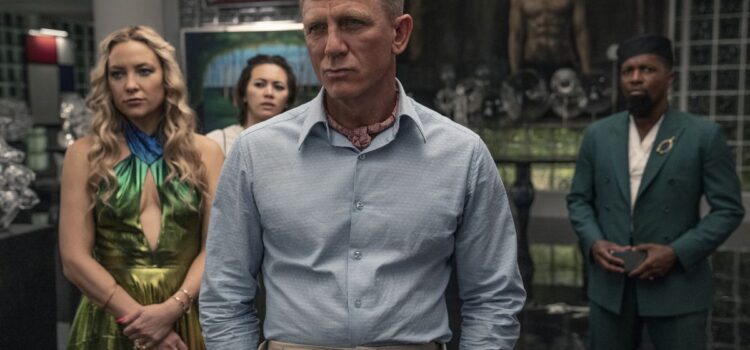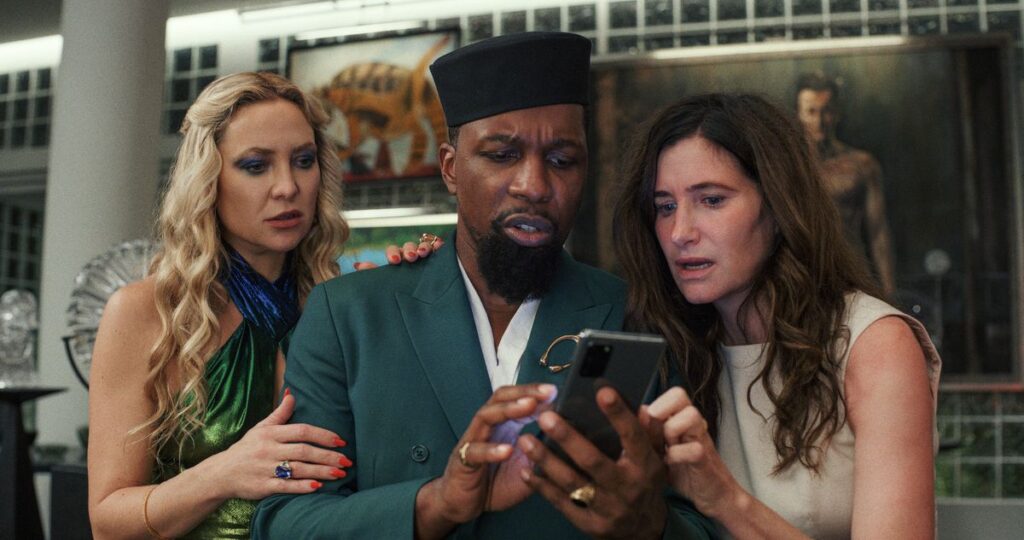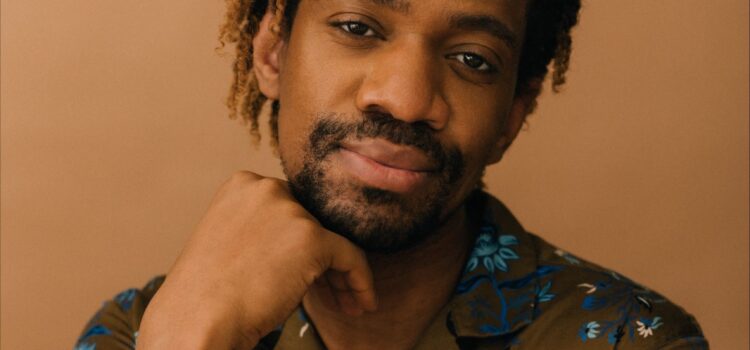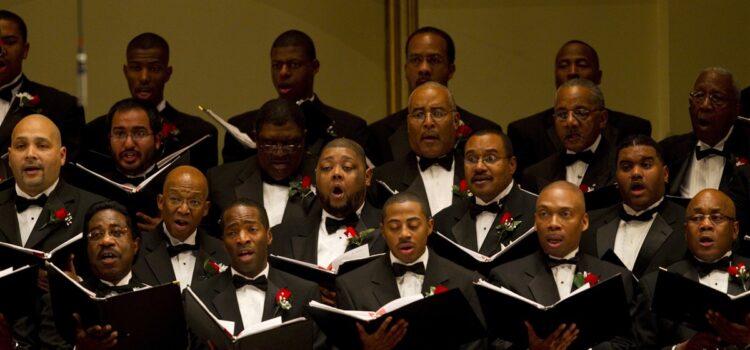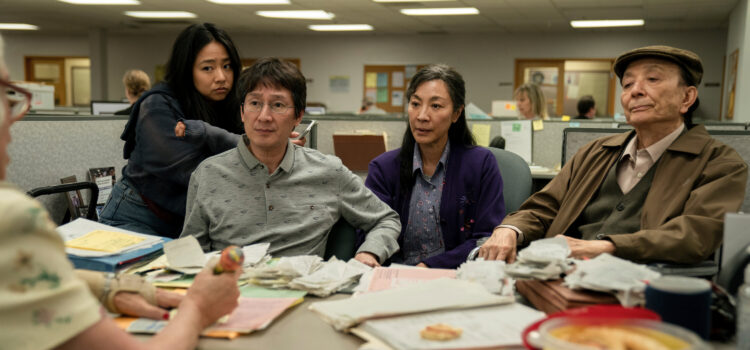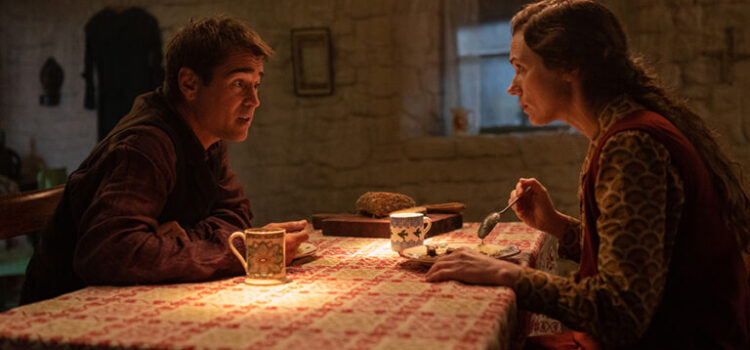By Lynn Venhaus
Loud, vulgar, and hollow, “Babylon” is an excessive look at nascent Hollywood without much to say and even less to feel despite its 189-minutes run time.
The drama traces the rise and fall of multiple characters during the silent-to-talking pictures era in early Hollywood, focusing on uninhibited decadence and depravity.
Meant to both celebrate Tinsel Town as a dream factory and to pull back the curtain on a morally bankrupt culture, “Babylon” is a cumbersome mess from writer-director Damien Chazelle, who has crafted pretty images – and some disgusting things that you can’t unsee — in a story without heart or soul.
Chazelle, the youngest Best Director in Oscar history for “La la Land,” when he was 32, has tackled a behind-the-scenes look at aspiring hopefuls in the industry before. But while that opus had characters you cared about and was sprinkled with pixie dust, the five storylines in this frenzied panorama are callous caricatures of ambition and downward spirals.
Brad Pitt appears to be on automatic pilot as hard-drinking matinee idol Jack Conrad, a suave player with a trail of ex-wives. Margot Robbie is dialed up to 11 as coarse New Jersey-born Nellie La Roy, a combative, self-destructive starlet. Newcomer Diego Calva stands out as dreamer Manny Torres, who becomes useful as a studio ‘fixer’ but is unfinished as a character. Jovan Adepo is gut-wrenching as Sidney Powell, a black bandleader facing demeaning requests – in a too-brief storyline. And Jean Smart has one showy scene as Elinor St. John, a powerful gossip columnist modeled after Hedda Hopper and Louella Parsons, but otherwise her performance is perfunctory.
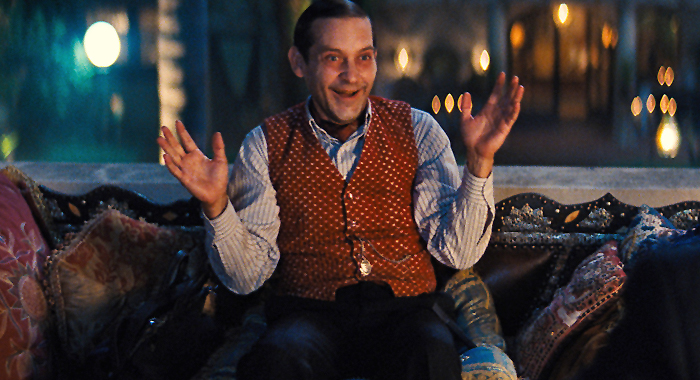
That results in a very busy scenario, with a sprawling cast. Tobey Maguire has an unsettling cameo as a degenerate who thrives on sleaze. And blink and you’ll miss Olivia Wilde as one of Jack’s wives, Katherine Waterston as one of his soon-to-be ex’s, Max Minghella as Irving Thalberg and Chloe Fineman as Marion Davies.
The opening 30-minutes are a shocking display of debauchery – those squeamish about bodily fluids, you are warned — and it gets worse from there, but is there anything new to say in concentrating on bizarre grotesqueness and cocaine-fueled party guests?
If you are familiar with Kenneth Anger’s tawdry tattletale, “Hollywood Babylon,” published in 1959 but so controversial that it was unavailable 1965-1975, and its follow-up in 1984, then you’ve read about the headline-grabbing bad behavior of fame-seekers in that era.
The film begins in 1926, then depicts how the change to talkies affected the business. In perhaps the best scene, the problems in the transition wreak havoc on a set with La Roy the ingenue. Frustration leads to more belligerent actions and escalating tirades, and a casualty happens that’s treated so cavalierly, it’s just hard to wrap your head around the attitudes.
The film’s assorted narcissists, posers, and hangers-on — people who may have sold their souls and are drawn, like moths to a flame, to the star-making machinery – eventually burn out or fade away. But Chazelle cheats us with an unsatisfactory wrap-up of their fates in a puzzling finale.
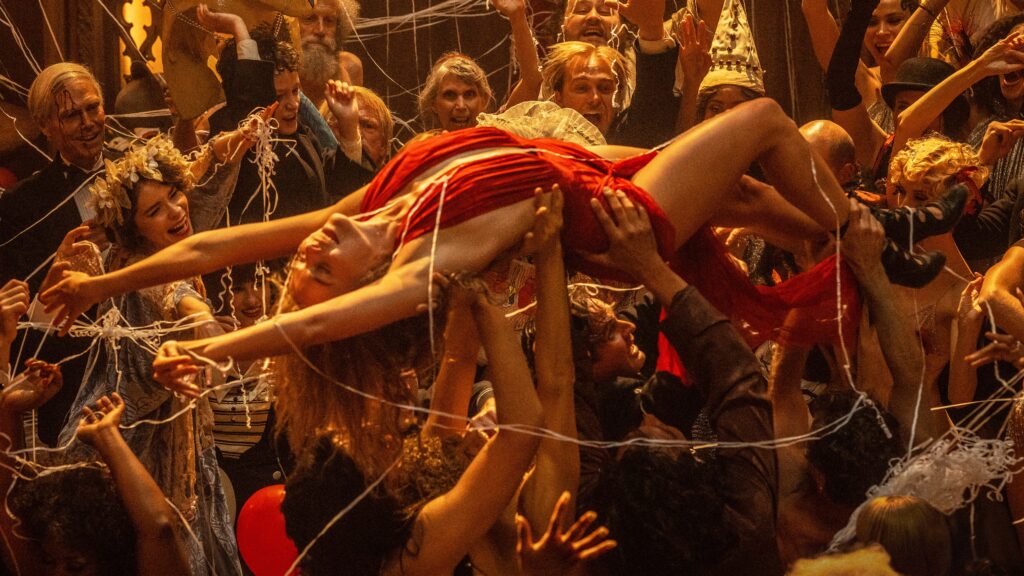
A stunning presence on screen, Robbie demands attention as someone who craves the spotlight but loses her luster when she has too many walks on the wild side. She has played complicated women before – Tonya Harding in “I, Tonya” and Harley Quinn in “Suicide Squad” and “Birds of Prey,” but it’s hard to muster sympathy for such an unlikable character as vainglorious Nellie.
Take away the outrageous examples of living out loud and the gross-outs (projectile vomit, bone-crunching rat-eating, kinky sex acts and funhouse freaks), “Babylon” is hard to figure out the endgame. Why should we care?
Technically, the artisan work is first-rate. Justin Hurwitz’s jazzy propulsive score captures the hedonistic time while cinematographer Linus Sandgren goes big on a grandiose scale, as does production designer Florencia Martin. The man-made opulence contrasts with the undeveloped Southern California hillsides that the cinema pioneers used for their sandboxes and playgrounds.
Above all, disappointment rests with Chazelle, who needed to get out of his own way – and pick a lane. You can’t have it both ways. He demonstrated such a flair for imaginative storytelling in “Whiplash,” “La la Land,” and “First Man,” that “Babylon” made me angry. He took the joy out of make-believe, which is his point, I suppose, but made it repulsive.
We need the magic of movies as an escape from cruel everyday realities, to engage us with flights of fancy. “Babylon” collapses from the weight of its ambition, a nihilistic abyss. It’s a colossal waste of time, talent, and money.
“Babylon” is a 2022 drama written and directed by Damien Chazelle and starring Brad Pitt, Margot Robbie, Diego Calva and Jean Smart. It is rated R for strong and crude sexual content, graphic nudity, bloody violence, drug use, and pervasive language and the runtime is 3 hours, 9 minutes. It opened in theaters Dec. 23. Lynn’s Grade: D.
